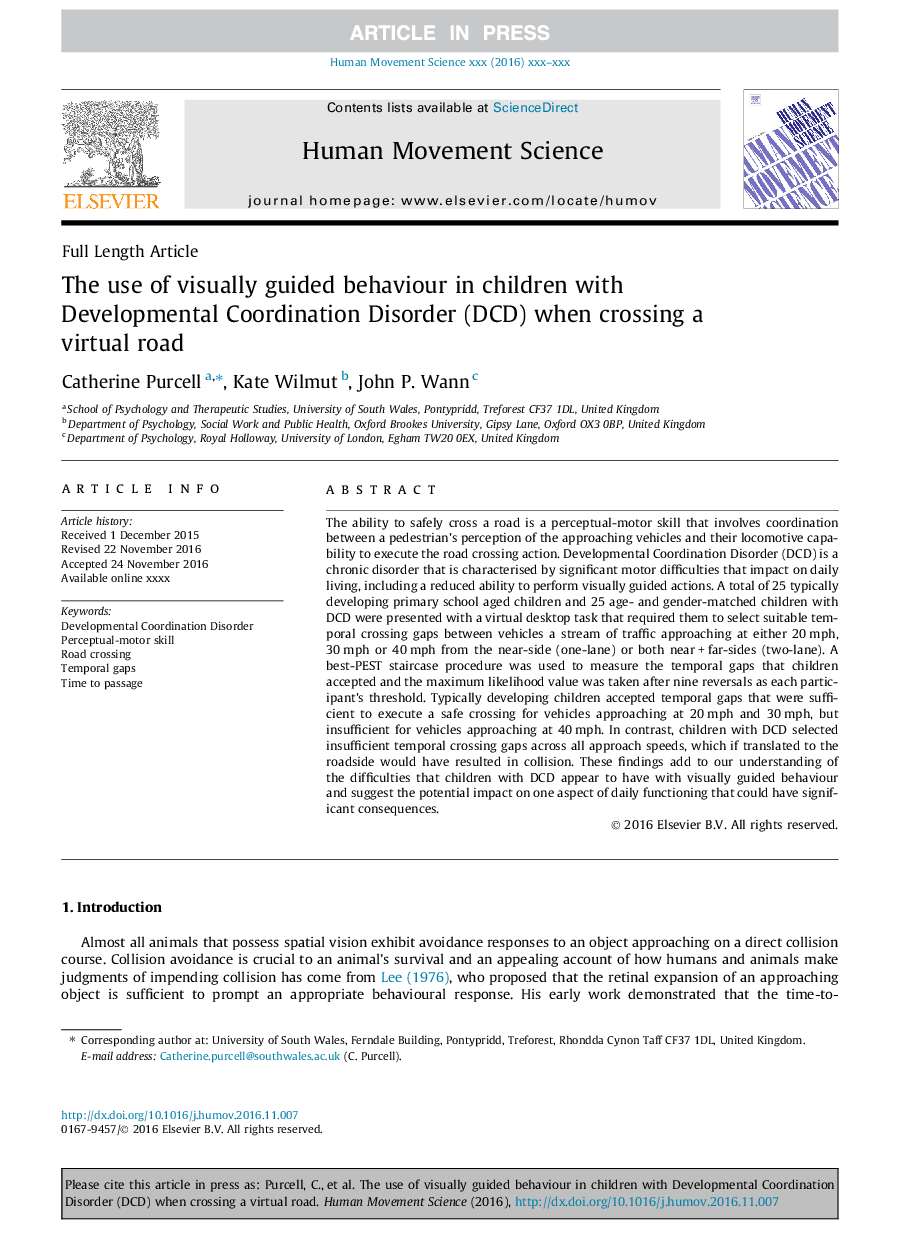| Article ID | Journal | Published Year | Pages | File Type |
|---|---|---|---|---|
| 5042006 | Human Movement Science | 2017 | 8 Pages |
Abstract
The ability to safely cross a road is a perceptual-motor skill that involves coordination between a pedestrian's perception of the approaching vehicles and their locomotive capability to execute the road crossing action. Developmental Coordination Disorder (DCD) is a chronic disorder that is characterised by significant motor difficulties that impact on daily living, including a reduced ability to perform visually guided actions. A total of 25 typically developing primary school aged children and 25 age- and gender-matched children with DCD were presented with a virtual desktop task that required them to select suitable temporal crossing gaps between vehicles a stream of traffic approaching at either 20 mph, 30 mph or 40 mph from the near-side (one-lane) or both near + far-sides (two-lane). A best-PEST staircase procedure was used to measure the temporal gaps that children accepted and the maximum likelihood value was taken after nine reversals as each participant's threshold. Typically developing children accepted temporal gaps that were sufficient to execute a safe crossing for vehicles approaching at 20 mph and 30 mph, but insufficient for vehicles approaching at 40 mph. In contrast, children with DCD selected insufficient temporal crossing gaps across all approach speeds, which if translated to the roadside would have resulted in collision. These findings add to our understanding of the difficulties that children with DCD appear to have with visually guided behaviour and suggest the potential impact on one aspect of daily functioning that could have significant consequences.
Related Topics
Life Sciences
Neuroscience
Cognitive Neuroscience
Authors
Catherine Purcell, Kate Wilmut, John P. Wann,
